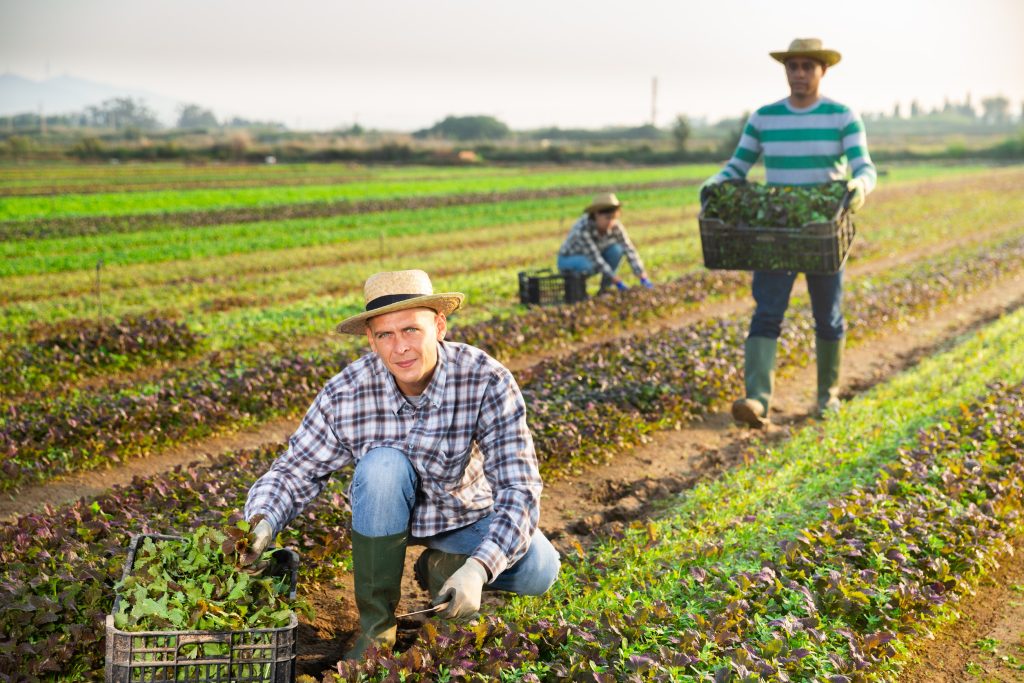
The image of the sturdy, resilient farmer is deeply ingrained in our culture, but behind that facade, many are struggling against unprecedented challenges threatening their livelihoods. From unpredictable weather to soaring costs, farmers across the nation are facing pressures that lead to catastrophic losses, impacting not just their families but our entire food supply chain. Understanding the complex web of factors driving these farmer challenges is crucial for appreciating the true cost of our food and the need for supportive solutions. Here are ten major reasons why farmers are currently facing such immense difficulties.
1. Extreme and Unpredictable Weather
Climate change is arguably the biggest disruptor, bringing more frequent and intense droughts, floods, heatwaves, and freezes. These extreme weather events can decimate crops, stress livestock, and damage essential farm infrastructure like barns and irrigation systems. A single catastrophic weather event can wipe out an entire year’s income, making long-term planning incredibly difficult. Insurance helps but often doesn’t cover the full extent of losses or the emotional toll. This volatility is a primary driver of current farmer challenges.
2. Skyrocketing Input Costs
The price of everything needed to run a farm – fertilizer, seeds, fuel, animal feed, equipment parts – has surged dramatically. Global supply chain issues, geopolitical conflicts affecting energy and fertilizer markets, and general inflation have driven these costs to unsustainable levels for many. Farmers often operate on thin margins, and these increased expenses directly erode their profitability. Managing cash flow becomes a constant battle against rising overheads. This economic squeeze is relentless.
3. Market Volatility and Low Prices
Farmers are often price-takers, not price-makers, meaning they have little control over the prices they receive for their products. Global commodity markets fluctuate wildly due to international trade policies, varying demand, and speculation, sometimes resulting in prices below the actual cost of production. Consolidation in the processing and retail sectors also gives buyers significant leverage, further squeezing farm-gate prices. This lack of pricing power is a chronic farmer challenge.
4. Persistent Labor Shortages
Finding reliable and skilled farm labor is becoming increasingly difficult and expensive. Changes in immigration policy, an aging domestic workforce, and the physically demanding nature of farm work contribute to chronic shortages. This forces farmers to work longer hours, potentially leave crops unharvested, or invest in costly automation they may not be able to afford. Labor is essential, and its scarcity directly impacts farm viability. This adds immense operational stress.
5. Supply Chain Disruptions

The journey from farm to table involves complex logistics, and disruptions anywhere along the chain can severely impact farmers. Bottlenecks at processing plants (as seen during the pandemic), transportation issues, and storage limitations can leave farmers with perishable goods they cannot sell. These disruptions lead to wasted food and lost income, through no fault of the farmer. Ensuring a resilient and efficient supply chain is vital. Farmers are often the first to suffer when it breaks down.
6. Increasing Debt Loads
To cope with high costs, invest in technology, or simply stay afloat during lean years, many farmers take on significant debt. Low commodity prices and unexpected losses make servicing this debt incredibly difficult. High interest rates further exacerbate the burden, trapping farmers in cycles of debt they struggle to escape. This financial pressure contributes significantly to farmer stress and mental health crises. Managing debt is a constant struggle for survival.
7. Complex Regulations and Compliance
Farmers navigate a maze of environmental, labor, food safety, and land use regulations at local, state, and federal levels. While often necessary, compliance can be costly and time-consuming, requiring specialized knowledge or consultants. Changes in regulations can necessitate expensive upgrades or alter farming practices, adding another layer of operational complexity. Staying compliant while remaining profitable is a significant farmer challenge. Paperwork can feel overwhelming.
8. Water Scarcity and Access Issues
In many agricultural regions, particularly in the West, access to water is becoming a critical issue due to drought, declining aquifers, and competing demands from urban areas. Water restrictions can limit the types or amount of crops farmers can grow, directly impacting yield and income. Investing in water-efficient irrigation is costly, and securing water rights can involve complex legal battles. Water scarcity poses an existential threat to farming in affected areas.
9. Pressure from Consolidation (Agribusiness)
Large agribusiness corporations exert significant influence over the agricultural sector, controlling inputs like seeds and chemicals, and dominating processing and purchasing. This consolidation reduces competition and can leave smaller, independent farmers with fewer choices and less bargaining power. The pressure to “get big or get out” forces many family farms to make difficult decisions about their future. This market dynamic disadvantages smaller operators.
10. Mental Health Crisis
The cumulative weight of financial stress, weather uncertainty, long hours, isolation, and regulatory burdens takes a heavy toll on farmers’ mental health. Rates of stress, anxiety, depression, and suicide are alarmingly high in the agricultural community. The stigma surrounding mental health in rural areas often prevents farmers from seeking help. This silent crisis underlies many other farmer challenges. Supporting farmer well-being is essential.
Supporting Our Nation’s Growers
The challenges facing modern farmers are multifaceted and severe, threatening not only individual livelihoods but the stability of our food system. Addressing these catastrophic losses requires a combination of supportive agricultural policies, investments in climate resilience and infrastructure, fair market practices, and robust mental health resources for rural communities. Recognizing the immense pressure farmers are under and supporting local and sustainable agriculture where possible are small steps consumers can take. Ultimately, overcoming these farmer challenges is essential for our collective food security.
What do you think is the biggest challenge facing farmers today, and what solutions might help? Share your perspective in the comments.
Read More:
From Tension to Trauma: 10 Escalating Problems When Family Mental Health Isn’t Addressed
The Healthiest Boomers Live Here: 5 Places Boomers Can Live Their Best Lives

Latrice is a dedicated professional with a rich background in social work, complemented by an Associate Degree in the field. Her journey has been uniquely shaped by the rewarding experience of being a stay-at-home mom to her two children, aged 13 and 5. This role has not only been a testament to her commitment to family but has also provided her with invaluable life lessons and insights.
As a mother, Latrice has embraced the opportunity to educate her children on essential life skills, with a special focus on financial literacy, the nuances of life, and the importance of inner peace.
